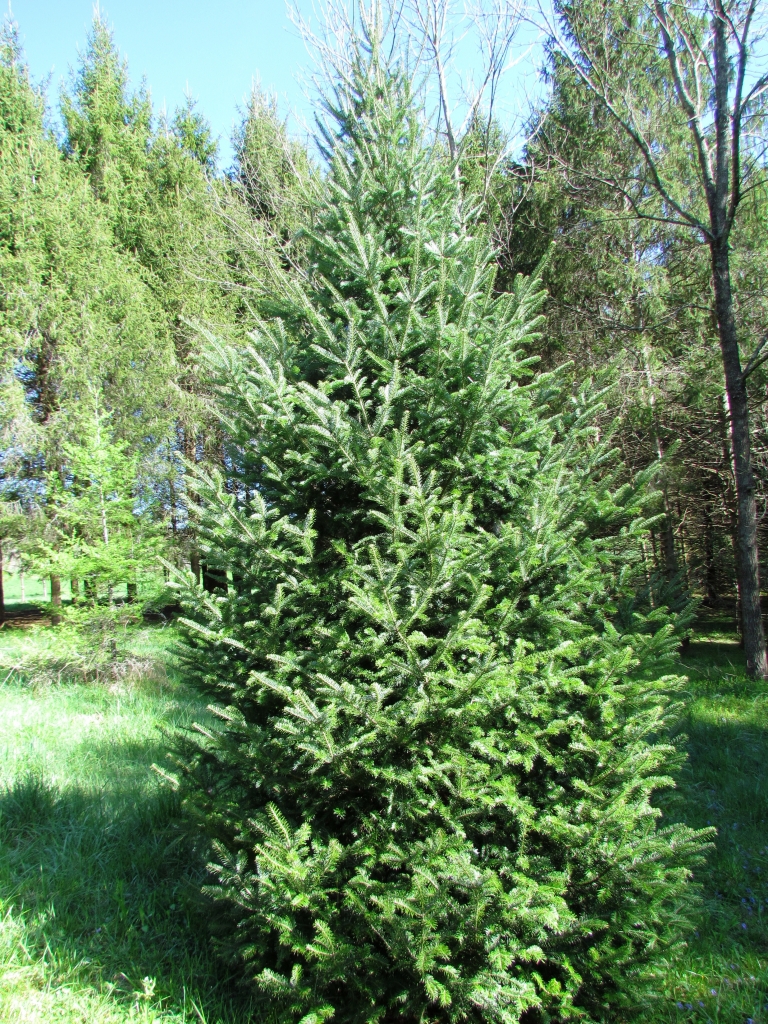Abies balsamea var. phanerolepis, first described in 1909 by Merritt Lyndon Fernald (1873-1950), is commonly known as Canaan or sometimes as Bracted Balsam fir. The name 'Canaan Fir' derives from one of its native localities, the Canaan Valley in West Virginia.
Differences from the type. cones are a little smaller .75 to 2 inches (1.9 - 5 cm) than on typical Abies balsamea. Its bract-scales are ordinarily as long or longer than the fertile scales, with awns projecting. It is not a hybrid with Abies fraseri as is sometimes thought. Generally not a distinguished cultivar in either forestry or horticulture but the name (from Greek phaner (conspicuous) and lepis (scale) is useful for botanical precision. For complete description, please refer to the type record.
